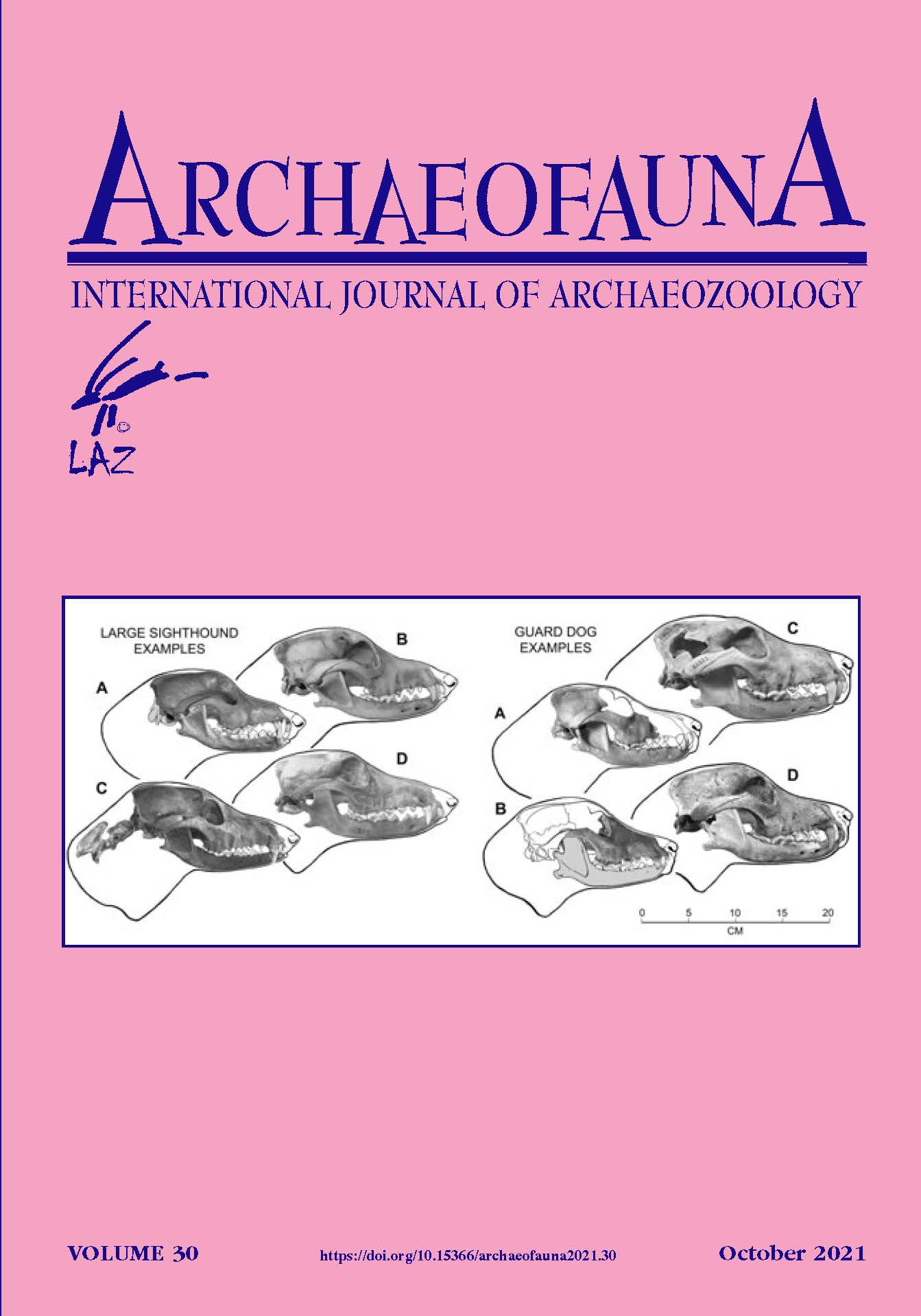Keywords:
CANIS FAMILIARIS, DOMESTIC DOG, GUARD DOG, JUVENILIZATION, MASTIFF, ROMANO–BRITISH, SIGHTHOUND, VINDOLANDAAbstract
In this report we investigate the origin and nature of morphological diversity in domestic dogs utilizing a database of over 1,000 recent and ancient canid skulls and skeletons. Integrated skull–skeleton analysis reveals eight functional groups, giving a clear picture of the extent and kind of morphological diversity produced by dog breeders in Europe, North Africa, and western Asia beginning in the Neolithic and intensifying about 2,100 years ago during the late Iron Age and Roman Era. We report nearly complete associated remains of a large sighthound from Vindolanda, a Roman-era fort–village site in northern England. With this we compare skulls of other sighthounds, and contrast them with remains of guard dogs from Vindolanda and other archaeological sites. The shape of jaw rami, relative size of teeth and state of dental wear, and the size and proportions of postcranial elements are the best differentiators of large dog morphotypes, while most skull parameters are less useful. The central section of the basicranium in ancient sighthounds (parameter Px which measures juvenilization) is little different from wolves, whereas in some modern breeds it is noticeably longer. By contrast, many ancient guard dogs have Px shorter than in wolves and show moderate juvenilization. Gracile sighthounds appear in the archaeological record in the Neolithic, while the earliest robust guard dogs appear later, in Iron Age sites. Building on results of previous work (Bennett & Timm, 2018) we continue to find intriguing similarities between west Asian dog

